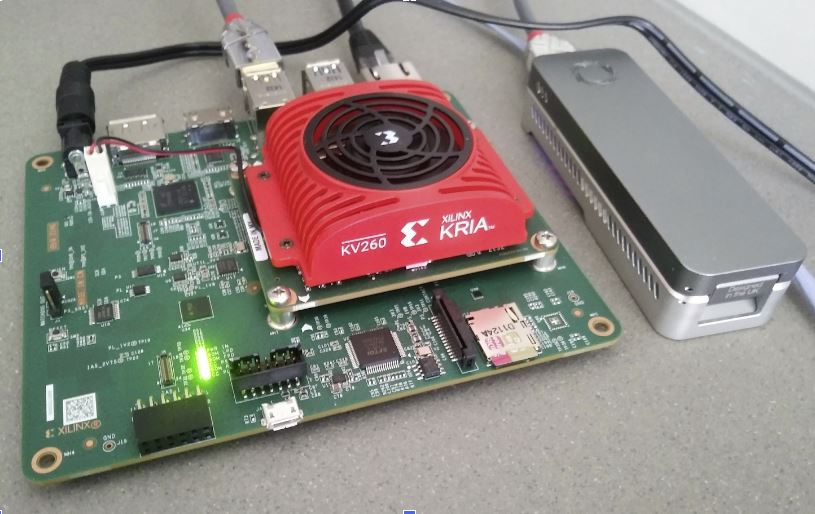Selective sequencing on a shoestring: the $300 HARU system
This week in GigaScience, Hasindu Gamaarachchi and colleagues published a paper on their HARU solution for selective sequencing, to be used alongside the handheld (“tricorder” like) Nanopore MinION device.
With the MinION, it is possible to kick out all non-target DNA strands before they are processed through the device’s pores, thus selectively sequencing specific target regions of the genome. This is a clever way to save time and resources, in principle. However, the computational demands for this method are challenging and usually require an expensive cluster infrastructure.
Having a tiny portable sequencer is nice. But the miniaturisation of the sequencing hardware is not satisfactory if you need bulky and expensive computers to do the real-time analysis steps that are necessary during a selective sequencing run.
As Dr. Gamaarachchi explains in our Q&A below, the authors’ motivation therefore was to realise a portable, open source computer system that can efficiently perform the analysis tasks of selective sequencing; in a tiny $300 device that is “two times faster than a 30,000 $ 36-core server, at a fraction of power consumption”. The proof-of-concept solution, called HARU, is suitable for small genomes such as viruses or bacteria, but the authors hope that their work will lead to further improvements down the line: “Our dream would be to one day have a chip within a nanopore sequencer that can handle the computational requirement of selective sequencing directly.“, Gamaarachchi concludes.
Author Q&A with Hasindu Gamaarachchi
“What is selective nanopore sequencing and how does it work”?
Selective nanopore sequencing is a nascent method to perform rapid genome analysis that enables the sequencing of specific genomic “regions of interest” rather than the entire genome. This programmable approach is free from biochemical processes, making it highly flexible and cost-effective.

Nanopore sequencers utilise an array of tiny pores, known as nanopores, to measure and record fluctuations in ionic current as DNA/RNA strands pass through them. If the region is irrelevant to the given research problem, the voltage across the nanopore can be reversed to eject the DNA/RNA strand from the pore. This approach optimises sequencing time and consumable resources (flowcells) by focusing primarily on the regions of interest.
“What are application examples for selective sequencing?”
Selective sequencing can reduce the time and cost of sequencing in applications such as genetic disease diagnosis, cancer detection, the surveillance of viruses (e.g. SARS-CoV-2) and other pathogens, and sequencing low abundance species in an environmental sample containing thousands of species. For example, it has been recently demonstrated that nanopore selective sequencing can be used to create a single test for over 50 genetic diseases that will cut diagnosis cost and time.
“What are the technical and computational challenges that come with this method?”
The real-time analysis of the data streamed from the sequencer is computationally demanding. The rapid analysis of data from hundreds of nanopores is crucial to promptly identify and eject unnecessary DNA/RNA strands. Any delay in this processing would undermine the effectiveness of selective sequencing. While nanopore sequencers like the Oxford Nanopore MinION are small portable devices comparable in size to a mobile phone and powered via USB, the computer required for performing selective sequencing is typically the size of a non-portable small fridge, consuming power that is hundreds of times greater than the MinION.

“What was your motivation to work on this problem”?
The usefulness of the nanopore MinION as a portable device is negated if it depends on a computer which is non-portable. Although nanopore selective sequencing has the potential to revolutionise diagnostic techniques in the future, it necessitates portable computational solutions to be utilised in settings such as clinics. Our motivation was to realise a portable computer system that can efficiently do the analysis side of the selective sequencing, which is synergistic with the size of the MinION.
“What is the main advance of your solution, HARU?”
HARU is a complete system that works on off-the-shelf devices, as opposed to being a conceptual work limited to simulation. In other words, it is a tangible prototype that actually runs. The full proposed design is available open-source. We have pre-compiled binaries and step-by-step instructions on building the overarching HARU system from scratch. One can simply purchase Xilinx’s Kria AI Starter Kit, flash the device, and execute HARU.
Advantages of HARU include portability, low cost, high-processing throughput, low power consumption and scalability. HARU can also be used as a framework for other future work intending to explore acceleration for selective sequencing on hardware.
“What about the costs? How much would it cost to implement the software/hardware setup as presented in the article?“
The only cost to replicate the HARU system is the target board itself. The software is free and open-source. We target Xilinx’s Kria AI Starter Kit, which is currently retailed at $300. As we have shown in the paper, for selective sequencing based on the algorithm called subsequence Dynamic Time Warping, this tiny $300 device is 2X faster than a 30,000$ 36-core server, at a fraction of power consumption.
“Is this a one-off proof of concept, or are there plans to develop this system for routine use?”
While HARU is currently a proof-of-concept, we envision continuing development and integration of this system into the nanopore sequencing ecosystem for routine use. However, this is a long journey as a lot of development has to be conducted to interface with the nanopore sequence acquisition and control software (closed source) called MinKNOW. Also, HARU is currently only suitable for small genomes such as viruses or bacteria and is impractical for large genomes like the human genome. We have thoughts to combine HARU with fast index-based mapping methods to tackle the problem with such large genomes. Open-sourced HARU can be used as a stepping stone by other researchers who would like to explore methods of hardware acceleration for selective sequencing. Our dream would be to one day have a chip within a nanopore sequencer that can handle the computational requirement of selective sequencing directly.
References
Efficient real-time selective genome sequencing on resource-constrained devices
Po Jui Shih, Hassaan Saadat, Sri Parameswaran, Hasindu Gamaarachchi
GigaScience, Volume 12, 2023, giad046, https://doi.org/10.1093/gigascience/giad046
Source code for the HARU accelerator: https://github.com/beebdev/HARU